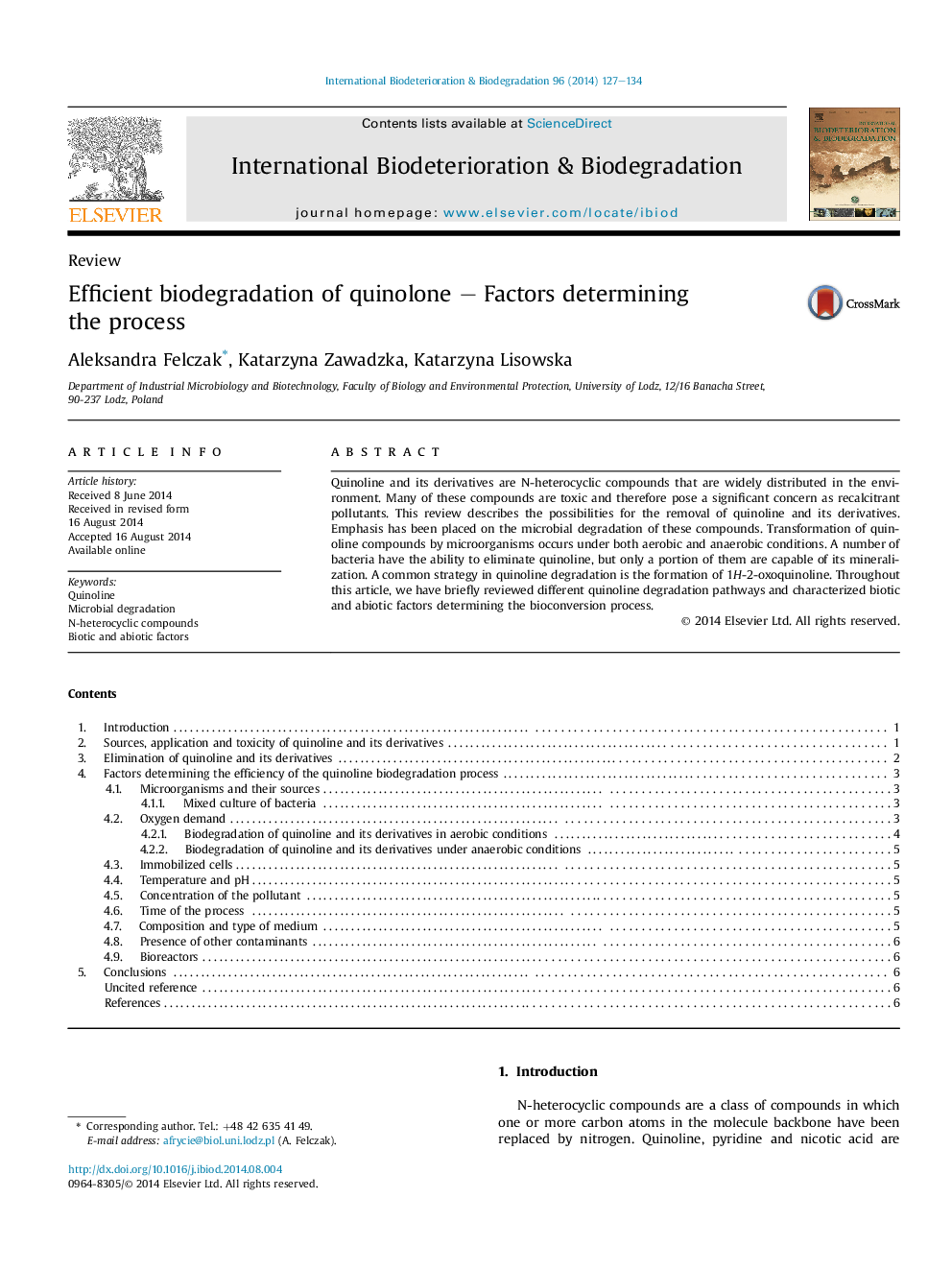| Article ID | Journal | Published Year | Pages | File Type |
|---|---|---|---|---|
| 6289237 | International Biodeterioration & Biodegradation | 2014 | 8 Pages |
Abstract
Quinoline and its derivatives are N-heterocyclic compounds that are widely distributed in the environment. Many of these compounds are toxic and therefore pose a significant concern as recalcitrant pollutants. This review describes the possibilities for the removal of quinoline and its derivatives. Emphasis has been placed on the microbial degradation of these compounds. Transformation of quinoline compounds by microorganisms occurs under both aerobic and anaerobic conditions. A number of bacteria have the ability to eliminate quinoline, but only a portion of them are capable of its mineralization. A common strategy in quinoline degradation is the formation of 1H-2-oxoquinoline. Throughout this article, we have briefly reviewed different quinoline degradation pathways and characterized biotic and abiotic factors determining the bioconversion process.
Related Topics
Life Sciences
Environmental Science
Environmental Science (General)
Authors
Aleksandra Felczak, Katarzyna Zawadzka, Katarzyna Lisowska,
